Ever stared at the HFS and HFS II online, wondering how two shoes with nearly identical names could feel so different on your feet?
You’re not the only one—this choice trips up a lot of runners.
The problem is, on paper and in pictures, the original HFS and the HFS II look almost interchangeable. And why did Xero Shoes bring the HFS back into production if the HFS II should be better?
Affiliate Disclosure: By clicking through the links on this page and purchasing the products, you’ll be helping me out. This is done because I receive a kickback from the sellers at no extra cost to you! Thank you so much for supporting us!
Quickfire: What Do You Choose?
- Pick HFS if you want a super minimal, highly flexible barefoot feel, an extra-wide toe box, and maximum ground feedback for pure, unrestricted movement.
- Pick HFS II if you prefer a more structured fit, improved durability, and a stiffer, more “shoe-like” ride—especially if you’re transitioning from traditional running shoes or want added support and lockdown.
Xero Shoes HFS
Type: Road
Width: Wide
Stack height: 7mm
Weight: 6.8 oz/ 193 g
A “real” minimal shoe with a ton of ground feel. Read the Full Review
Xero Shoes HFS II
Type: Road
Width: Mid-Wide
Stack height: 7mm
Weight: 8.3oz / 235g
Still minimal but more structured and protective. Read the Full Review
The HFS II is noticeably narrower and less forgiving in fit compared to the original HFS, so sizing up may be essential.
If you’re familiar with the original HFS, you know its reputation for a roomy toe box and flexible fit. I found the original model extremely accommodating due to the upper being so minimal and flexible.
And as long as you size the original HFS correctly (I went a full size up), you’ll have a ton of space for your toes to wiggle, which for barefoot runners is the key to foot health.
Which minimal running shoe is for you?
Take a quick 5-question quiz to identify the perfect minimal running shoe for your feet! You'll get both road and trail options based on your answers!
Switching to the HFS II, the first thing I noticed was the narrower overall fit. The toe box is still anatomically shaped, but the upper feels firmer, holding the forefoot and midfoot more tightly.
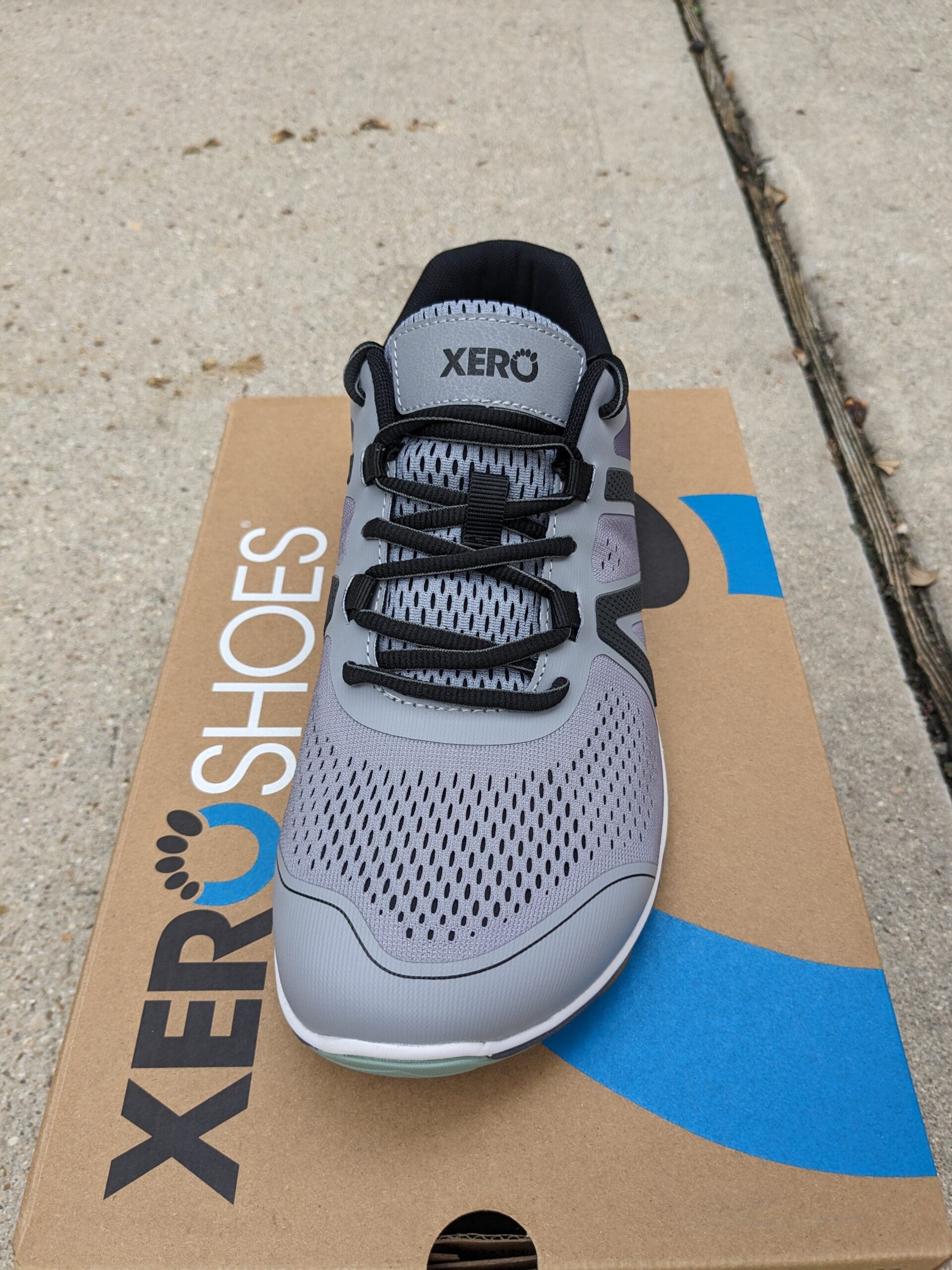
If the OG HFS is “roomy and relaxed,” then HFS II is “streamlined and structured,” but still in a minimal package. The heel and midfoot now have much more lockdown, while the toe box, although wide, doesn’t quite match the width or pliability of the first version.
I recommend going half a size—or even a full size up—to ensure you have enough width and toe room. The stiffer materials, especially before break-in, can make the shoe feel a bit unforgiving right out of the box. But remember, that may be what some of you are looking for!
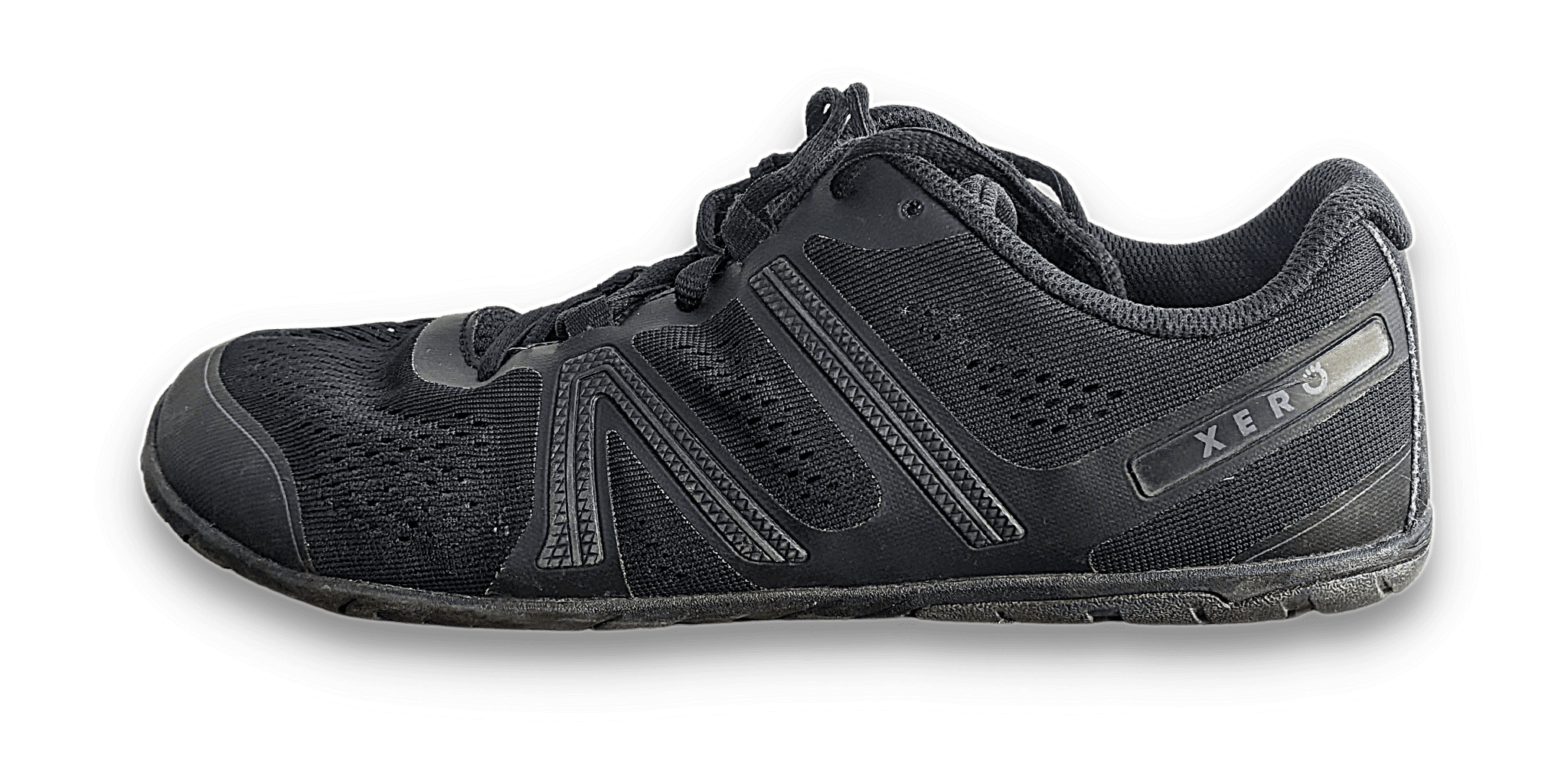
Xero Shoes HFS
The HFS gives a classic barefoot experience with maximum ground feel; the HFS II offers additional structure and a muted, protective feel.
The original HFS is about as barefoot as you can get without seriously considering just running in socks.
It’s flexible, responsive, and lets you feel every change in surface texture. The sole is just thick enough (around 4mm, plus an optional 3mm insole) to take the edge off, but feels more minimal than other shoes at this stack height.
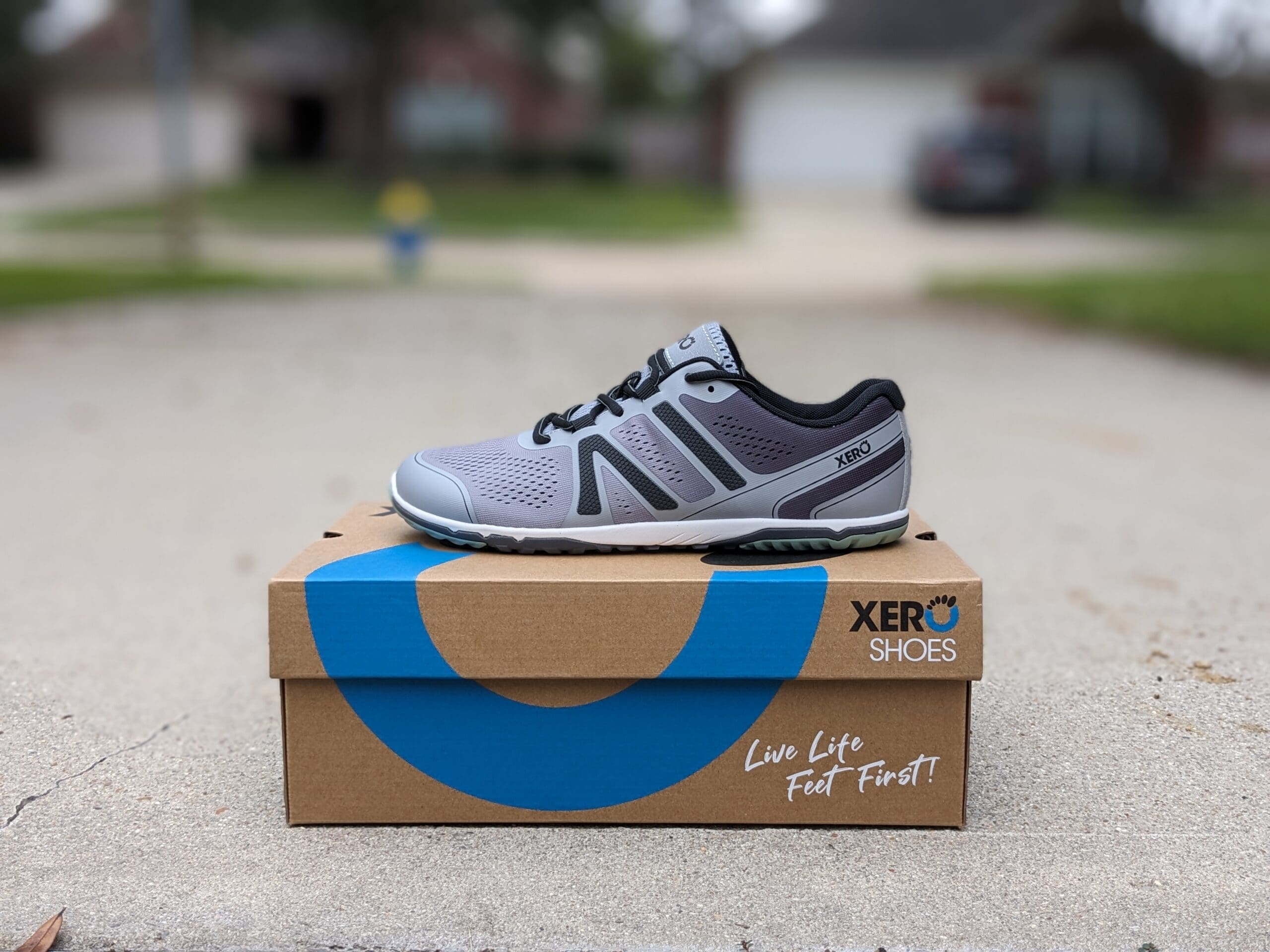
By comparison, the HFS II dials back the raw ground feel in favor of a little more structure and protection. The stack height is closer to 6mm, plus the same 3mm insole, and the new outsole compound is noticeably stiffer.
You lose a little feedback from the ground, but gain some protection if, which can help if you hit any rough rocky terrain. Or if you’re just not ready for the 100% barefoot feel yet.
The upper materials shed that “sock-like” feel for something tighter and a bit more “traditional runner.”
For runners who are transitioning to minimalist footwear or who felt the original HFS was too unstructured, the HFS II’s added firmness will likely be a big plus. For die-hard barefoot fans, that “muted” feel is a step away from what made the OG special.
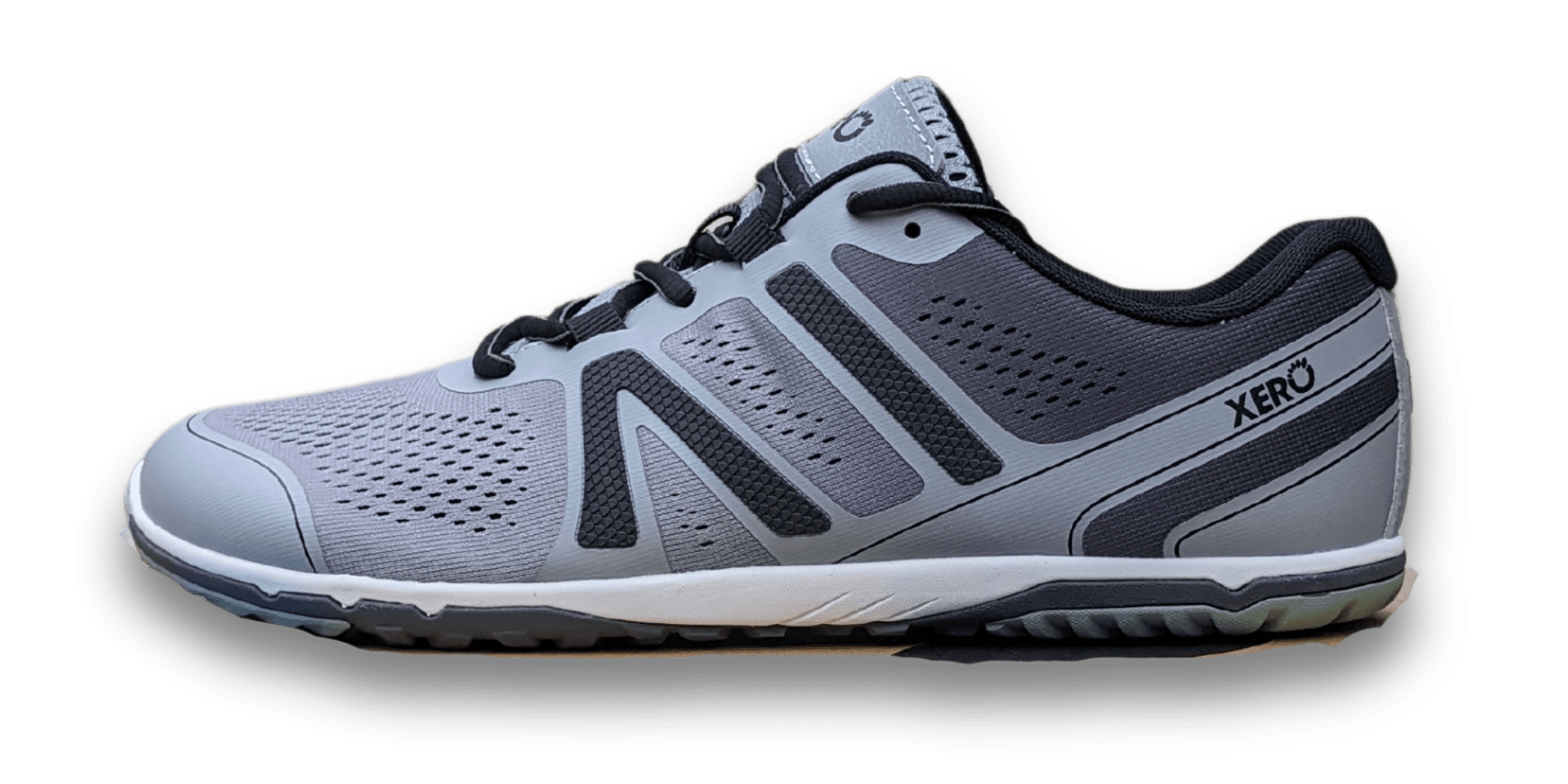
Xero Shoes HFS II
The HFS II addresses durability issues found in the original, especially regarding upper stretch and outsole longevity.
I’ll be honest—the original HFS, while incredibly comfortable, didn’t exactly have a reputation for longevity. My pair showed some wear at the forefoot flex point after around 500km. The mesh upper, while breathable, is not far behind and will likely fail the shoe first.
The outsole, though grippy, could probably use a few more millimeters of thickness if you plan on taking it past 1000km.

It’s clear Xero listened to feedback for the HFS II. The upper now uses a stiffer, denser mesh that resists stretching and keeps the fit consistent over time. Early reports (and my own mileage so far) show little to no deformation, even after hard use. The outsole compound has also been upgraded, with tweaks to the tread pattern and rubber density, resulting in a longer-wearing sole that Xero claims will hit their 5000-mile outsole guarantee for more runners.
For anyone frustrated by the OG’s premature breakdown, the HFS II is a real improvement.

Xero Shoes HFS
The original HFS is lighter, but the HFS II’s extra grams bring extra protection and structure.
Many minimalist runners are obsessed with weight, as am I!
The original HFS weighed in at an impressive 6.8 ounces (193g) in Men’s US 9, making it one of the lightest road options out there. Lightweight fans will understandably balk at anything heavier.
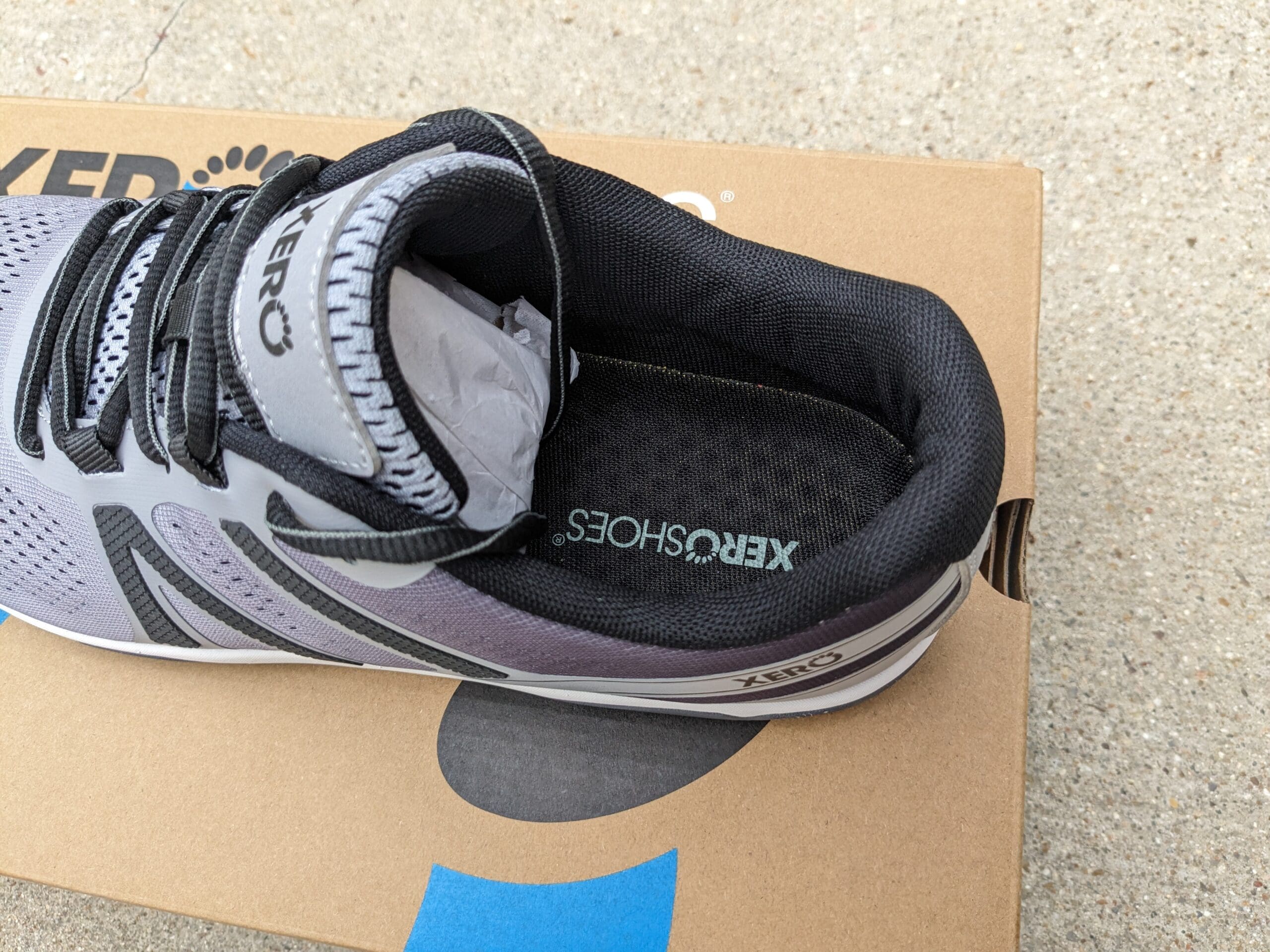
The HFS II bumps that up to 8.3 ounces (235g), mostly due to the denser upper and sturdier sole.
Honestly, while you do feel the difference when you first lace up, it doesn’t change the feel all that much. If you’re super sensitive to weight, this might be a deal-breaker. For most runners, the extra protection and durability are worth an ounce or two.

Xero Shoes HFS II
The HFS II’s upper is stiffer and more durable, but sacrifices some of the flexibility of the original.
The old HFS upper was all about sock-like comfort—it was thin, highly flexible, and breathed exceptionally well.
The tongue and lacing were minimal, and the whole shoe more or less disappeared on your foot after a mile or two. On the downside, that flexibility sometimes meant sloppy lockdown.
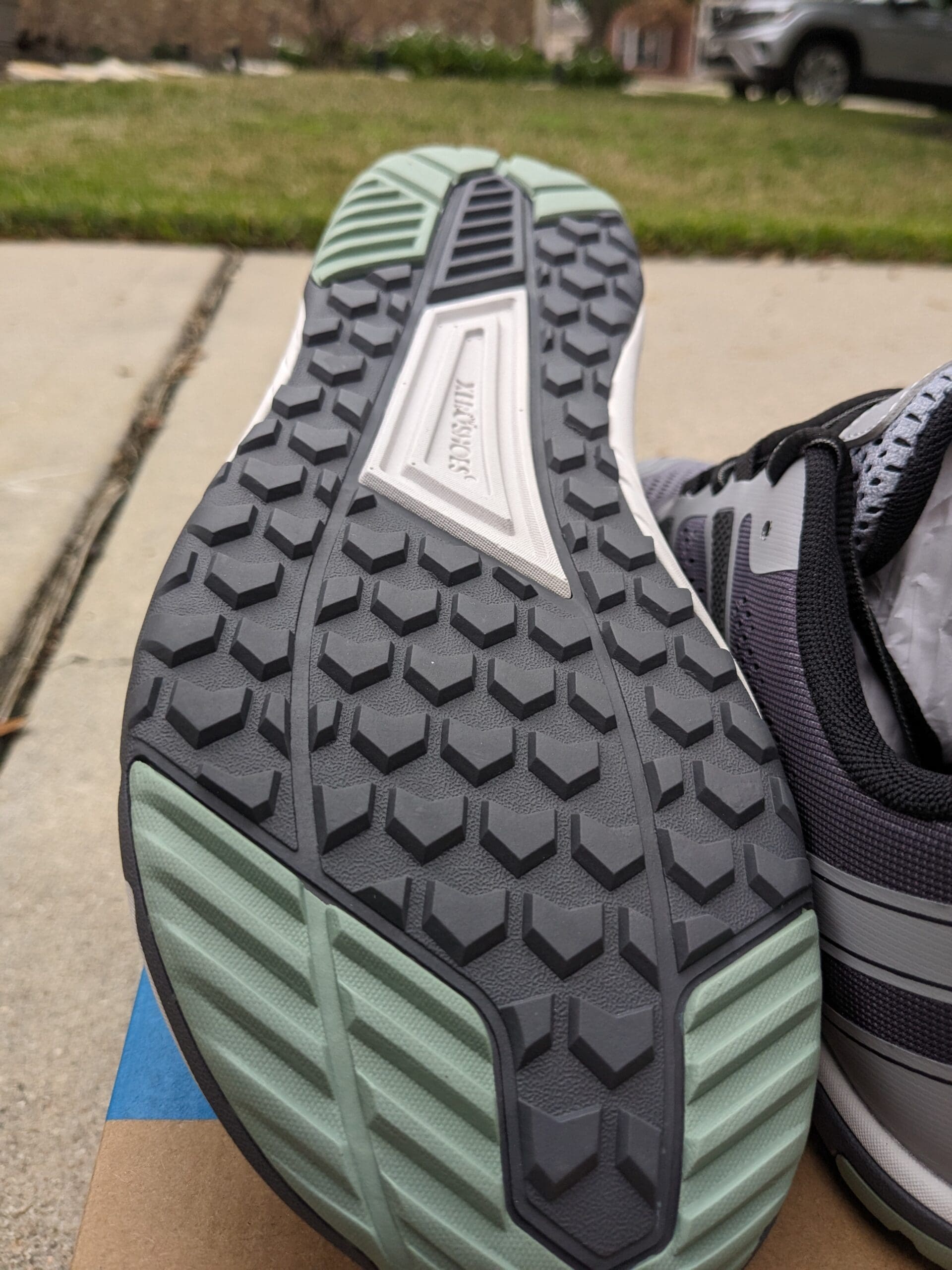
The HFS II replaces that vibe with a much more substantial upper.
The mesh feels denser, and the overlays are positioned for extra reinforcement. The tongue is thicker, providing more comfort for higher-volume feet, and the heel counter has more structure—which may not work for every foot.
Overall, foot lockdown is improved, particularly at higher speeds or during agility workouts, but don’t expect that broken-in “slipper” feeling out of the box.

Xero Shoes HFS
Choose HFS II if you want improved durability and a more structured upper; stick with HFS if you crave maximum flexibility and ground feel.
If you’re tough on your shoes—running hard, racking up high mileage, or simply tired of mesh blowouts—then the HFS II is a clear upgrade. The gain in durability and foot lockdown is noticeable, and for me, it inspires confidence, especially when running on mixed surfaces or pushing pace.
If, on the other hand, the original HFS felt perfect and you have high-volume or wide feet, you might find the HFS II a touch restrictive. The flexible, sock-like upper of the first version is difficult to truly replace. For the seasoned minimalist who wants every ounce of ground feedback, the OG is still the purer experience.
Xero Shoes HFS
Type: Road
Width: Wide
Stack height: 7mm
Weight: 6.8 oz/ 193 g
A “real” minimal shoe with a ton of ground feel. Read the Full Review
Xero Shoes HFS II
Type: Road
Width: Mid-Wide
Stack height: 7mm
Weight: 8.3oz / 235g
Still minimal but more structured and protective. Read the Full Review
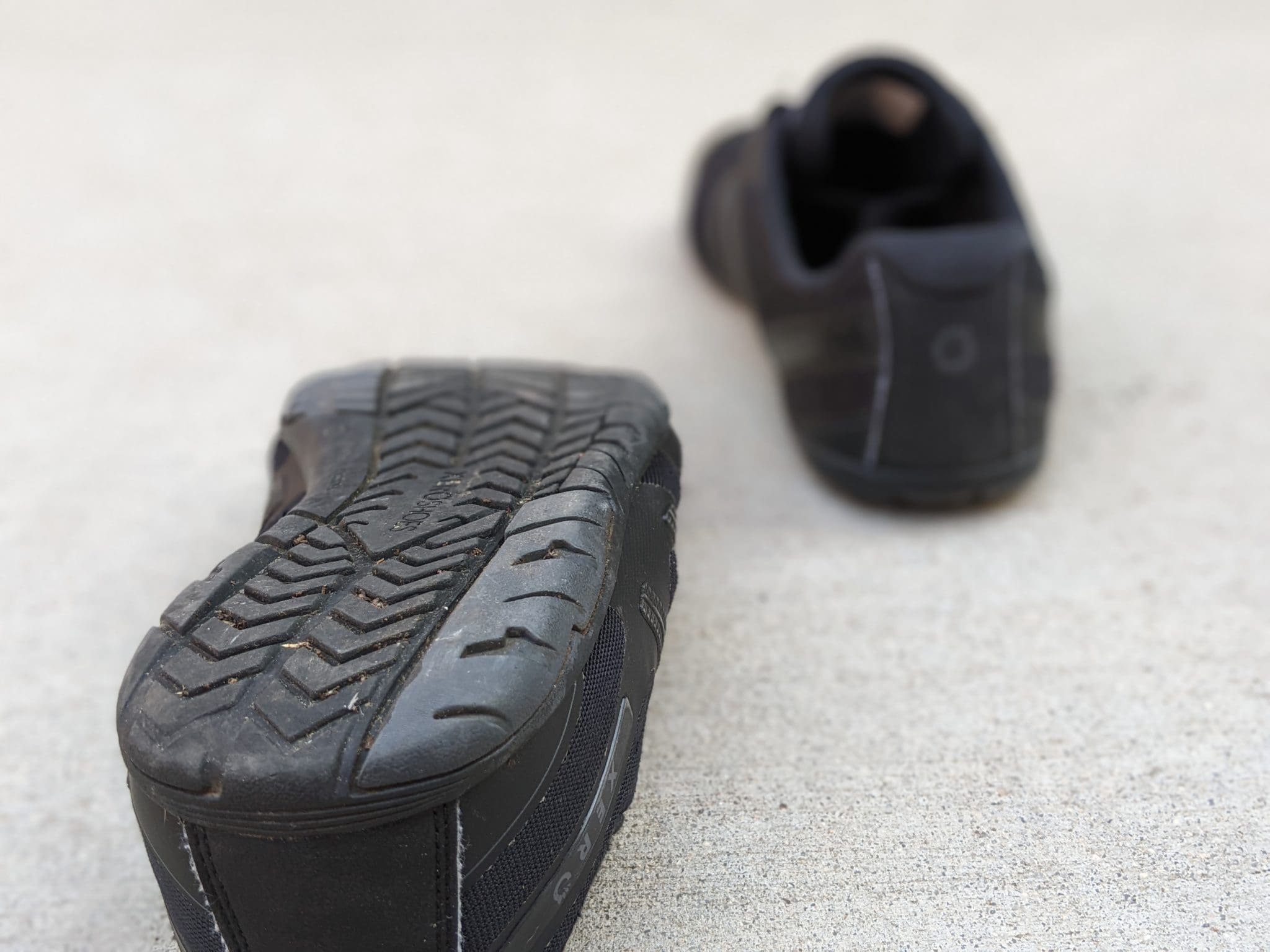
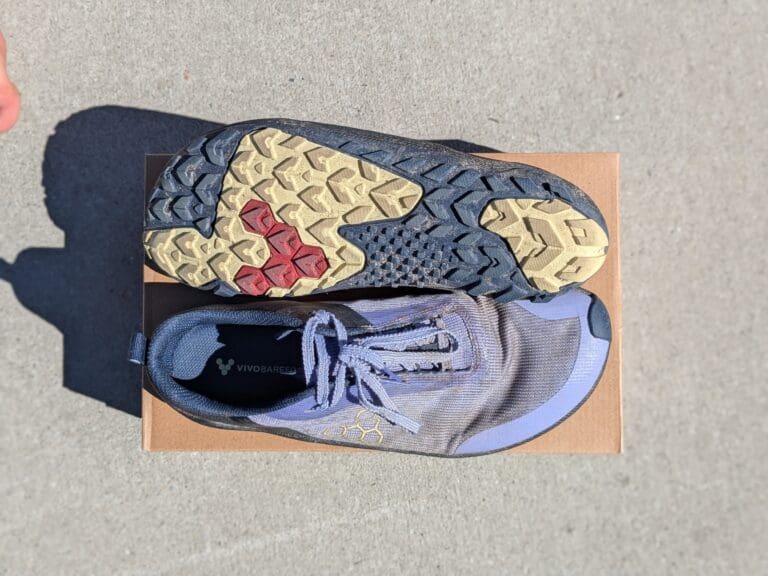
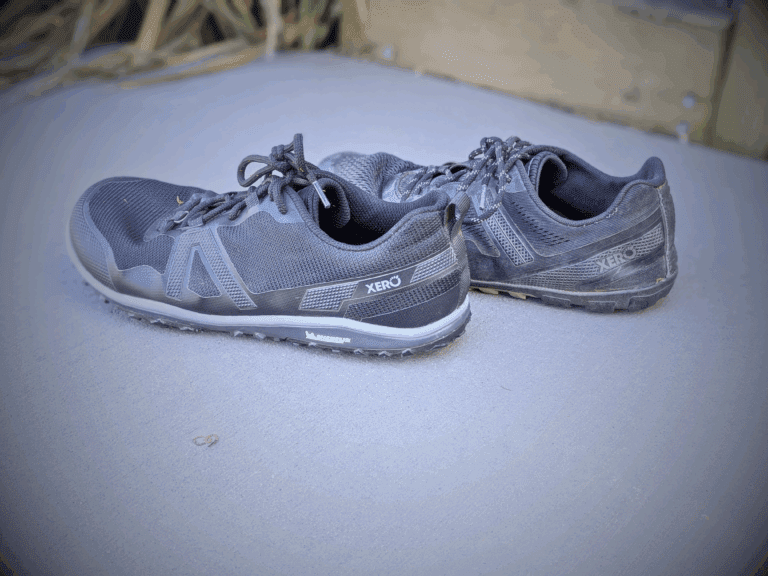
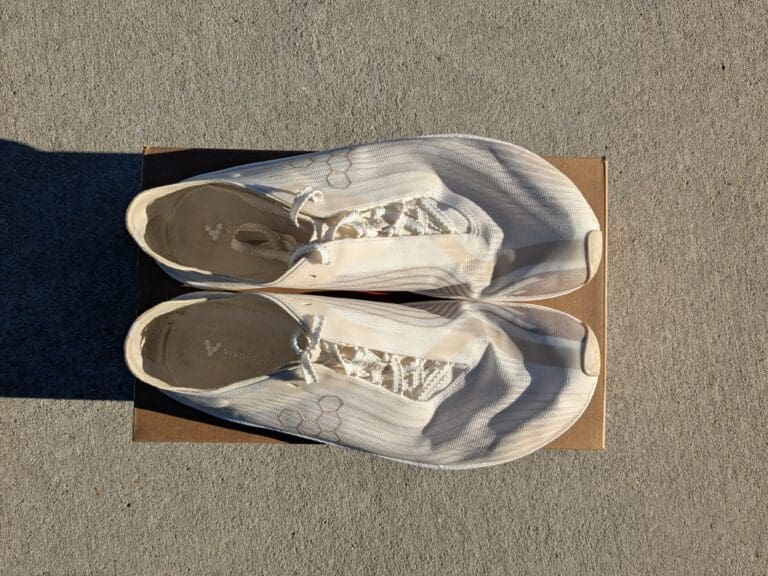
Hi Nick,
Nice wrap up, as always.
I got size 9 in the Prio and they fit just fine. Would you recomend the same size for the HFS II or sizing up? I love to bring the Prio (at least on training runs) up into the mountains on rugged terrain which I wouldn´t to with the original HFS. So will definitely try the HFS II and be glad about the reduced weight (compared to the Prio).
Best wishes Wolfgang
I’d go up a full size compared with to the Prio. I found the HFS II much more narrow compared to other Xero Shoes, so that extra sizing is a much. Whereas, I think the outsole/midsole is better suited to your terrain in the mountains, I’d personally stick with the Prio. Some of the materials on the upper of the HFS II are similar to the original, and I’d worry that they’d be too fragile. Not something I worry about with the Prio.
Thank you very much Nick
As always, appreciate your insight.
Have a nice week-end!